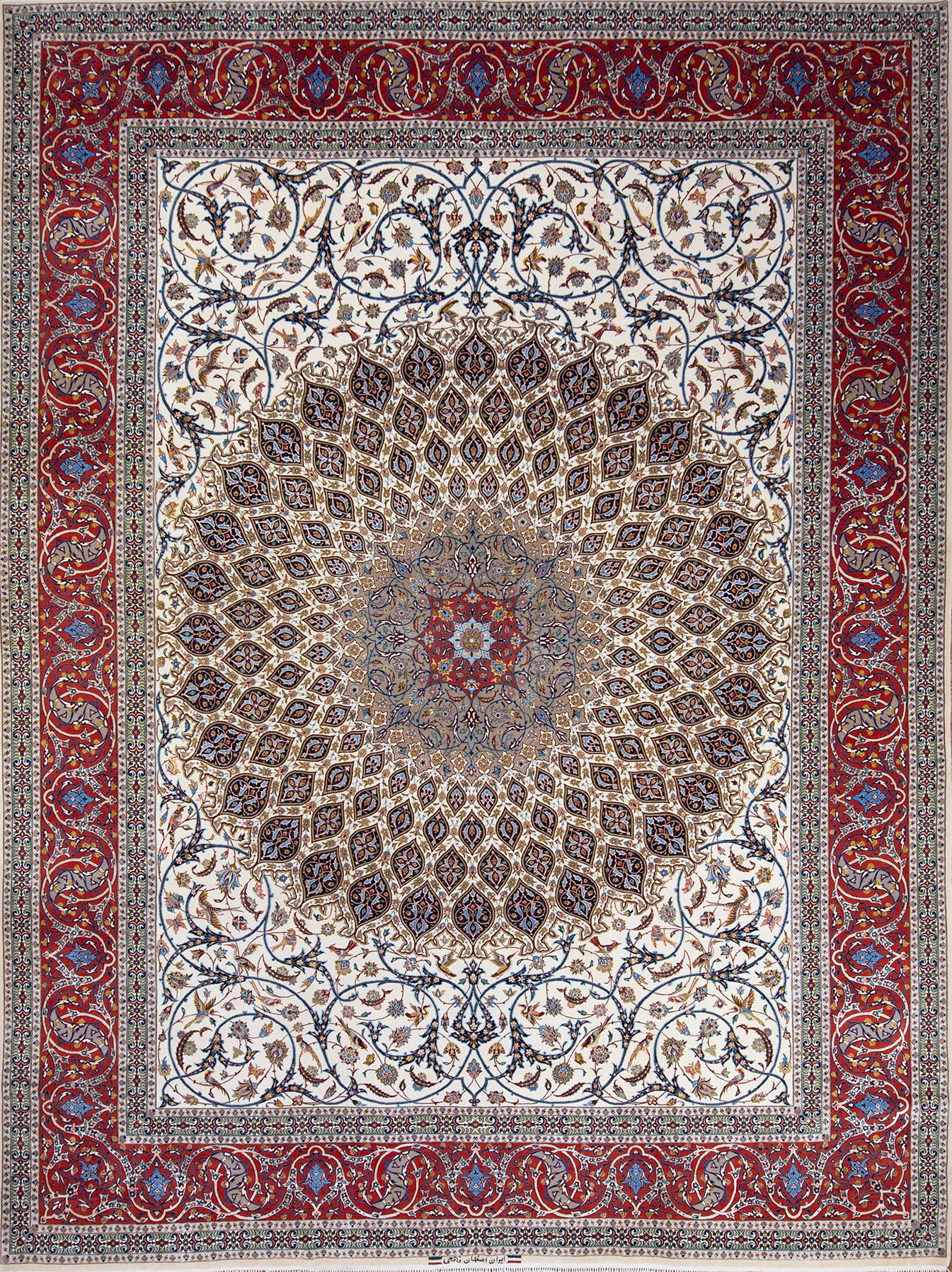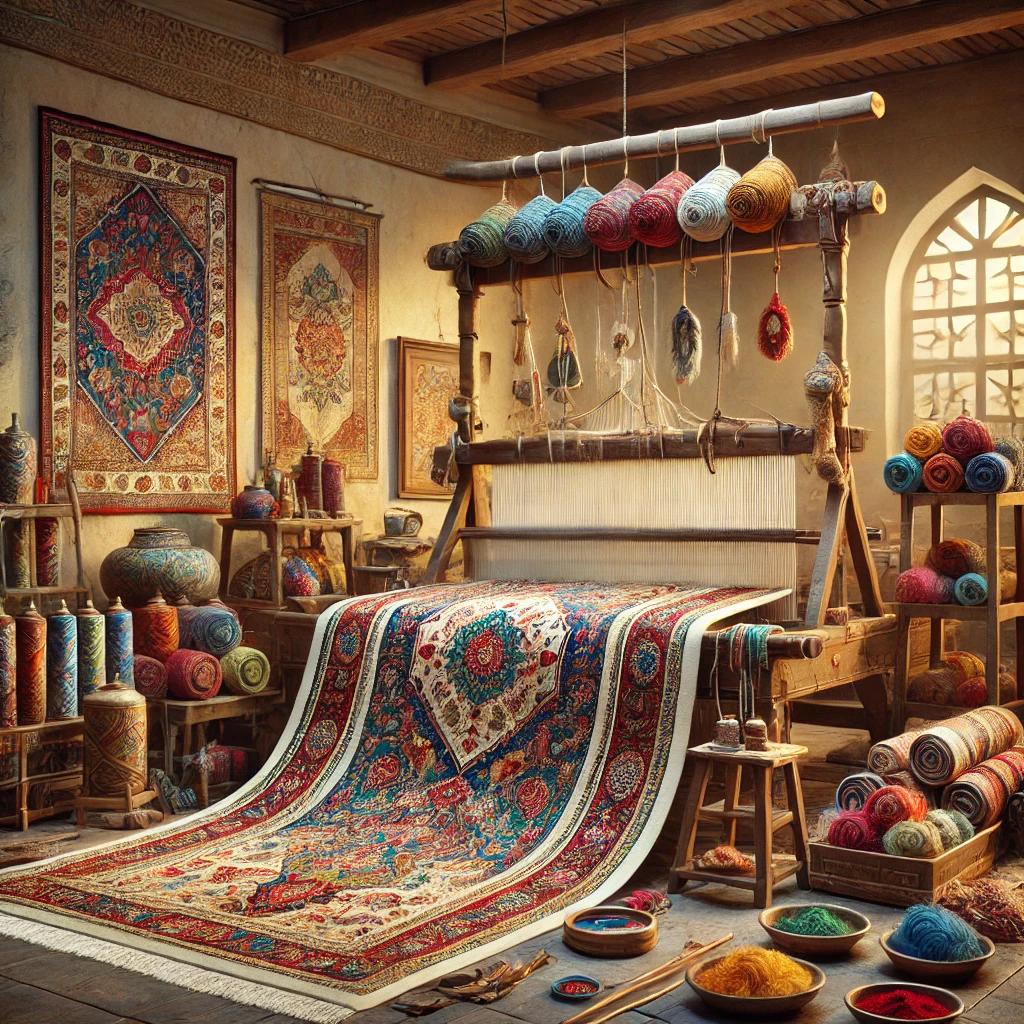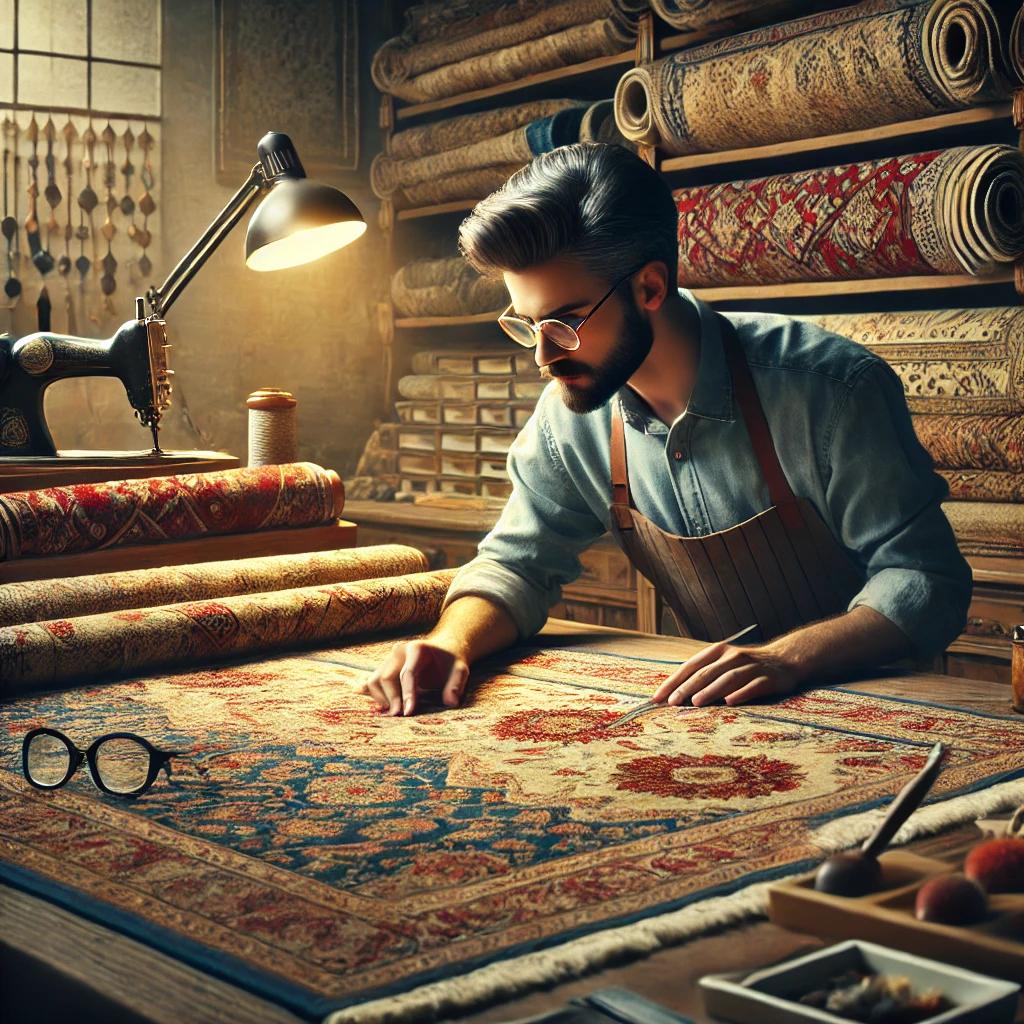
Exploring Silk Persian Rugs and Their Rich Heritage
Estimated reading time: 6 minutes
Key Takeaways
- Silk Persian rugs are renowned for their exceptional craftsmanship and vibrant colors.
- The history of Persian rugs stretches back over 2,500 years, with rich cultural significance.
- Silk is prized for its elegance, while wool is favored for its durability.
- Traditional hand-knotting techniques showcase the artistry involved in rug-making.
- Authenticity is crucial when purchasing Persian rugs; understanding key details can help buyers.
Table of contents
When it comes to luxurious textiles, silk Persian rugs stand out as some of the finest in the world. Esteemed for their intricate craftsmanship and vibrant colors, these rugs speak to centuries of artistry and tradition. Silk Persian rugs combine elegance with cultural significance, embodying both aesthetic beauty and practical function. Their allure is not just skin deep—they are celebrated as masterworks of oriental art that carry rich symbolism and a storied heritage.
Persian rugs are renowned globally, not only for their beauty but for their ability to blend utility with aesthetic expression. They represent a cultural narrative that spans generations, reflecting the identities and histories of the artisans who craft them. In this blog post, we will explore the fascinating history of Persian rugs, delve into the materials used—particularly silk and wool—highlight traditional weaving techniques, and discuss their cultural significance, authenticity, and more. Let’s embark on this journey through the world of silk Persian rugs.
History and Origins of Persian Rugs
The history of Persian rugs dates back over 2,500 years, rooted in the rich cultural heritage of ancient Persia, which is modern-day Iran. Archaeological findings indicate that rug-making in this region began during the Achaemenid Empire and transformed significantly over the centuries. Historical texts and artifacts, such as the Pazyryk Carpet from the 5th century BC, showcase the artistic complexity that has continued through the ages (Denver Area Rug Cleaning; Arsin Rug Gallery).
Persian rugs have always played a profound role in their culture. They were not merely functional items; they served as artistic expressions, diplomatic gifts, symbols of wealth, and vehicles for storytelling throughout Persian history. Each rug tells a story, depicting mythological elements and conveying cultural values through its design and patterns (Catalina Rug). This historical depth enriches our appreciation of these beautiful textiles. For a deeper exploration of Persian rugs’ history and cultural significance, refer to The Rich History and Cultural Significance of Persian Rugs.
Materials Used in Persian Rugs
Silk Persian Rugs
When we talk about silk Persian rugs, we’re discussing some of the most luxurious items available. The characteristics of silk—its unmatched sheen, intricate detail, and vibrant colors—set it apart from other materials. The fine fibers of silk offer weavers the ability to create tightly knotted, exquisite patterns, which are evident in the stunning designs of silk rugs. These rugs are prized for their elegance and value, although they are often more delicate and best suited for low-traffic areas or display (Arsin Rug Gallery). To understand more about the journey and craftsmanship of silk Persian rugs, visit Exploring Silk Persian Rugs: A Journey Through History, Craftsmanship, and Styles.
Wool in Persian Rugs
In contrast, wool Persian rugs are known for their durability and resilience. Wool offers a range of textures depending on the breed of sheep used and its processing. Its warmth and softness make wool a favored choice for everyday rugs. Unlike silk, which can be delicate, wool can withstand more foot traffic, making it ideal for living spaces where functionality is as critical as beauty.
Comparison of Silk vs. Wool
While silk is lustrous and intricate, it also comes with higher costs and lower durability. Wool, on the other hand, is robust, tactile, and more affordable, rendering it an excellent choice for those wanting beauty that can withstand daily use. It’s also important to mention that many authentic Persian rugs often incorporate cotton as a foundation thread, adding stability to the weave (Arsin Rug Gallery).
Persian Rugs Techniques
Traditional Hand-Knotting Techniques
The craft of weaving Persian rugs involves traditional hand-knotting techniques that lie at the heart of their authenticity. Two primary knot techniques are used: the asymmetrical or “Persian” knot and the symmetrical or “Turkish” knot. These methods dictate how the fibers are tied together, affecting both appearance and texture (Arsin Rug Gallery). For a step-by-step understanding of hand-knotting, refer to Hand Knotted Rugs: How to Make Them Step-by-Step.
Natural Dyes
Artisans often rely on natural dyes derived from plants, minerals, and roots, which create the vibrant, long-lasting colors found in Persian rugs. The natural dyeing process is labor-intensive, ensuring each color has depth and richness, enhancing the overall appeal of the rug (Arsin Rug Gallery).
Craftsmanship and Complexity
The craftsmanship involved in creating a Persian rug is remarkable; it can take anywhere from months to years to complete a single piece. This labor intensity gives the rugs not only their value but also a direct tie to the regional, familial, or religious identities of the weavers. The complexity of each design often reflects local traditions and cultural narratives (Denver Area Rug Cleaning).
Traditional Oriental Influence
Persian rugs are integral to traditional oriental design, harmoniously blending influences from Central Asian textiles and Islamic artistry. They often feature common motifs such as medallions, geometric patterns, vines, and flowers, which reflect local mythologies and cultural values (Nazmiyal Antique Rugs).
Each motif embodies a story, serving as a narrative thread linking the past with the present. The significance of flowers like the lotus and the peony is profound, often symbolizing beauty, purity, and sometimes even prosperity. Geometric borders further enhance the aesthetic appeal, integrating historical references and aspirations into each design (Denver Area Rug Cleaning; Arsin Rug Gallery).
Authentic Rugs and Art
Authenticity is vital in the world of Persian rugs, defined by traditional techniques, regional origins, and the lineage of the weavers. Each rug is not just a textile but a manifestation of art, showcasing the weaver’s skill, creativity, and cultural expression (Arsin Rug Gallery).
Tips for Distinguishing Authentic Rugs
- Look for irregularities: Handwoven rugs often have slight imperfections that are a hallmark of authentic craftsmanship.
- Natural versus synthetic dyes: Authentic rugs typically use natural dyes, which can offer color depth and richness unmatched by synthetic varieties.
- Woven integrity: Check for woven construction rather than glued or machine-stitched edges.
Connecting with reputable vendors who emphasize transparency can help ensure you’re buying an authentic piece (Arsin Rug Gallery). For more detailed guidance, see 5 Secrets to Identifying Authentic Persian Rugs.
Turkish Vintage Rugs
Turkish vintage rugs present an intriguing contrast to their Persian counterparts. Often crafted with wool over wool or wool over cotton, these rugs are characterized by unique flat-weaving and hand-knotting techniques (Nazmiyal Antique Rugs).
Contrasts with Persian Rugs
Turkish rugs typically emphasize geometric patterns and tribal motifs, while Persian rugs lean towards floral and curvilinear designs. Notably, the knotting techniques differ as well; Turkish rugs employ the Ghiordes (symmetrical) knot, while Persian rugs often use the Senneh (asymmetrical) knot. Historical intersections, particularly during the Seljuk period, led to shared influences and crossovers between these two rich rug-making traditions (Nazmiyal Antique Rugs).
Vintage Rugs in the USA
In recent years, there has been a growing demand for vintage Persian and Turkish rugs in the USA. Collectors and homeowners alike appreciate these rugs not only for their beauty but also for their historical significance and longevity.
Trends in Consumer Preferences
Today’s consumers often favor authenticity and sustainable craftsmanship. They are increasingly drawn to the idea of owning a piece of history, which is reflected in their design choices. Vintage rugs fit seamlessly into modern and eclectic style preferences, providing character and charm to spaces.
Tips for Buyers
- Vet sellers: Ensure that sellers are knowledgeable about their products and provide clear provenance.
- Ask for verification: Request certificates of authenticity or third-party evaluations if available.
- Assess condition: Check carefully for any necessary cleaning or restoration before purchase, particularly with older or delicate items.
Rug in Turkish Culture
Rugs play a central role in Turkish culture, where their significance extends far beyond decoration. They serve various purposes, from practical uses in religious practices to symbols of familial and social identity. Each region in Turkey features distinct designs that reflect local history and cultural nuances (Nazmiyal Antique Rugs).
Regional Designs
Turkish rugs are renowned for their colorful patterns, distinctive textures, and rich symbolism. Regional varieties, from Anatolia to Konya, contribute to a diverse tapestry of Turkish rug-making traditions, each infused with unique historical significance.
Caring for Your Persian and Turkish Rugs
To maintain the beauty and longevity of Persian and Turkish rugs, proper care is essential. Here are best practices to follow:
- Regular gentle vacuuming: This helps remove dirt and dust without damaging the fibers.
- Prompt attention to spills: Clean spills immediately to prevent stains.
- Avoid direct sunlight: Prolonged exposure can cause fading in vibrant colors.
- Rotate rugs periodically: Rotating helps ensure even wear.
For vintage or intricate rugs, professional cleaning by specialists is advisable. Avoid harsh chemicals and excessive moisture, which can damage delicate fibers (Arsin Rug Gallery).
Conclusion
Silk Persian rugs are not just textiles; they are a celebration of artistry and cultural heritage. From their richly woven histories to their intricate designs, these rugs embody the creativity and traditions of their makers. By exploring authentic handmade rugs, we can not only elevate our spaces but also appreciate the profound artistry they represent.
Additional Resources
To further your exploration of authentic Persian and Turkish rugs, here are a few recommended resources:
- Arsin Rug Gallery
- Nazmiyal Antique Rugs
- Visit local museums or galleries specializing in textile arts for deeper insights into rug-making techniques and history.
Discovering the world of silk Persian rugs enriches our understanding of a significant aspect of cultural history, making these masterpieces not just decor but treasured stories of art and heritage.


